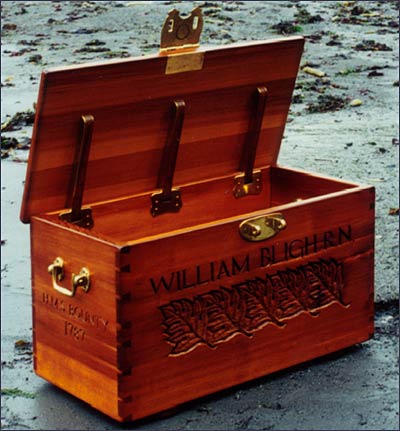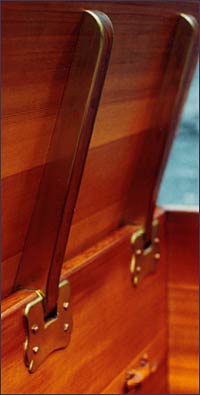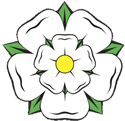|
The story of Bligh's chest is that, when Bligh was at Nootka
with James Cook in the spring of 1778; he so much admired
the chest made there in Friendly Cove for Captain James Cook,
that he ordered the carpenters to make another one similar
to Cook's chest for himself. Although the chest was begun
in that place, the story tells of how the chest was not completed
until long afterward in England; when even the Bounty mutiny
and the Providence's successful breadfruit expedition were
already history.
The front of this chest is carved
with the name William Bligh. There is also carved a frieze
of five breadfruit leaves,
which form a pattern beneath the name. The ends of the
chest are carved; one with the name of H.M.S. Bounty and
the date
1787, the other with H.M.S. Providence and the date 1791.
The hardware is cast yellow brass.
The handles are fastened carefully with screws to backing
blocks on the inside of the
box. The handles would have been used for lashing the chest
in place, as well as for carrying it. A handsome feature
is the cast brass hasp, which bears the date 1787. This
locking device can accommodate two padlocks - witness to
Bligh's
typical
demands for security.
The three hinges are strongly made from
teak battens with brass cheeks. The battens are secured
to the lid, and the heel of each
batten is allowed to pivot in a brass box. The three brass boxes
bearing the hinge battens, are housed along the top edge of the
back panel. The hinges support the lid very well and tend to
keep it flat. The hinges are very nicely made and provide
another interesting
feature of this chest.
The material throughout is old growth red
cedar, of uniform thickness a little more than one and
a half inches.
|



